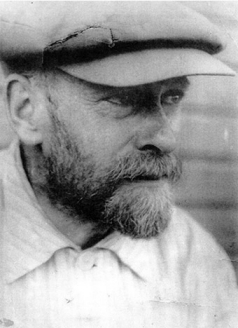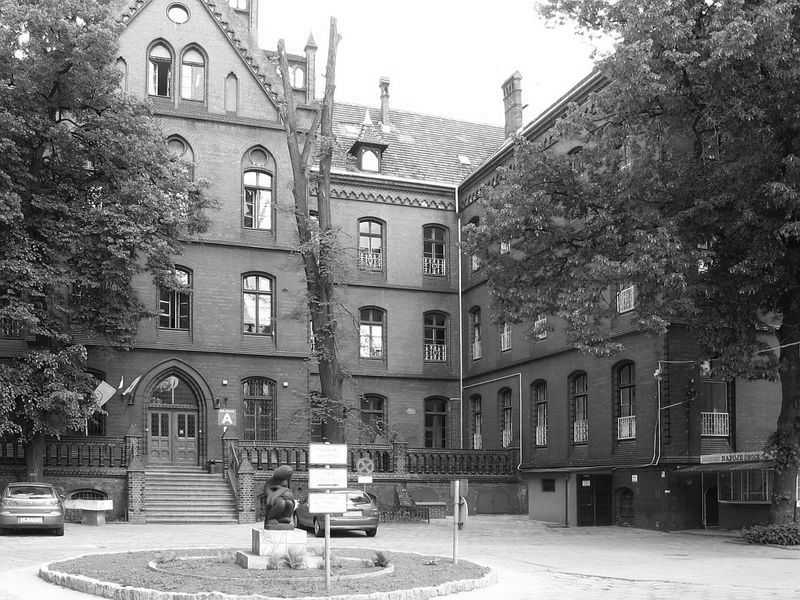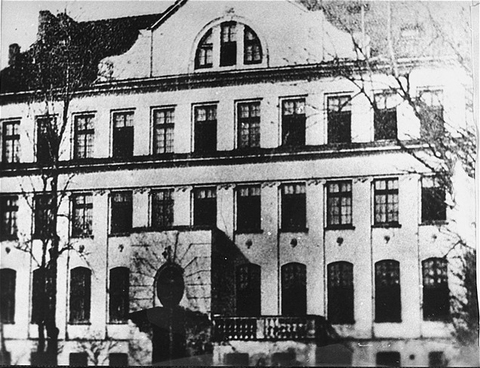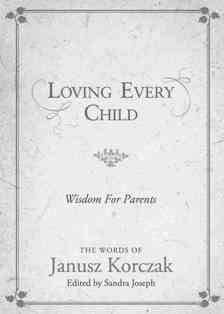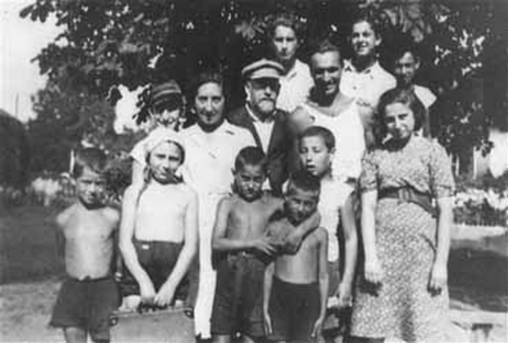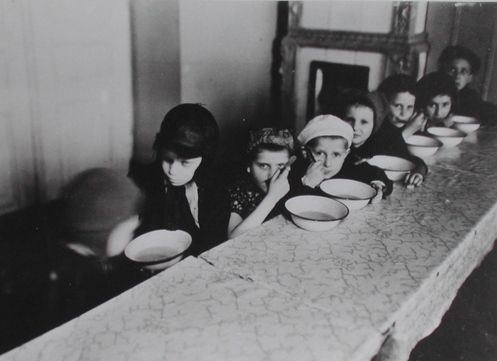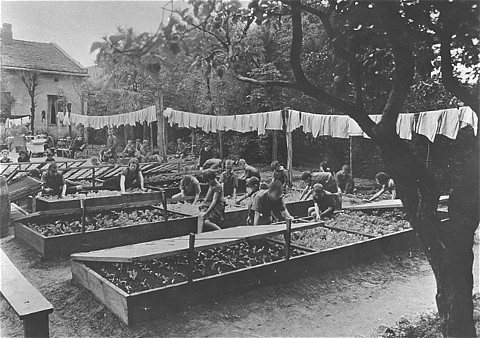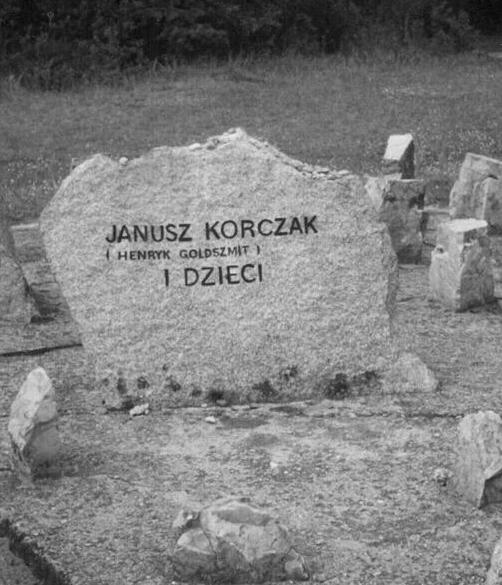Holocaust Education & Archive Research Team |
Ghettos
Introduction to the Ghettos of the Holocaust
Jewish Ghettos The Judenrat Judenrat Leaders Prominent Jews
| ||||
Janusz Korczak
Janusz Korczak was the pen name of Henryk Goldszmit born in 1878 or 1879, physician, writer and educator. He was born in Warsaw, the son of an assimilated Jewish famly. Korczak’s father was a successful attorney who became mentally ill when Korczak was eleven. This was a heavy blow to the family’s financial situation and a trauma that cast its shadow over Korczak throughout his life.
Even while still a student of medicine at Warsaw University, Korczak was drawn to circles of liberal educators and writers in Poland. When he entered medical practice, he did his best to help the poor and those who suffered the most, at the same time he began to write.
His first books, Children of the Streets (1901) and A Child of the Salon (1906) aroused great interest. In 1904 he was drafted into the Russian army as a doctor, and was posted to East Asia.
Both as a doctor and a writer, Korczak was drawn to the world of the child. He worked in a Jewish children’s hospital and took groups of children to summer camps, and in 1908 he began to work with orphans.
In 1912 he was appointed director of a new and spacious Jewish orphanage in Warsaw, on Krochmalna Street. Throughout his life, his partner in his work was Stefania Wilczynska, a superb educator, the daughter of a wealthy Jewish family who dedicated her life to the care of orphans and greatly influenced Korczak and his career as an educator.
In the orphanage, Korczak studied the secret depths of the child’s soul, and it was in the orphanage that he made practical application of his educational ideas. Korczak called for an understanding of the emotional life of children and urged that children be respected.
A child was not be regarded as something to be shaped and trained to suit adults, but rather as someone whose soul was rich in perception and ideas, who should be observed and listened to within his or her own autonomous sphere.
Every child he maintained has to be dealt with as an individual whose inclinations and ambitions, and the conditions under which he or she is growing up, require understanding.
In several of his books – such as King Matthew the First (1923), When I am Small Again (1925), and the short theoretical work The Child’s Right to Respect (1929) – Korczak stressed the social conflict between child and adult in a situation when power and control are in the hands of the adult, even when the adult does not understand or refuses to understand the child’s world, and deliberately deprives the child of his or her due. In Korczak’s view “to reform the educational system.”
In 1914 Korczak was again called up for military service in the Russian army, and it was in military hospitals and bases that he wrote his important work How to Love Children.
After the war he returned to Poland – now independent – and to his work in the Jewish orphanage, but he was also asked to take charge of an orphanage for Polish children and to apply there the methods he had introduced in the establishment on Krochmalna Street.
The 1920’s were a period of intensive and fruitful work in Korczak’s life – he was in charge of two orphanages, where he also lived, served as an instructor at boarding schools and summer camps and as a lecturer at universities and seminaries, and wrote a great deal.
In the late 1920’s, he was able to put into effect his long-time plan to establish a newspaper for children as a weekly added to the Jewish daily in the Polish language, Nasz Przeglad – it was written by children, who related their experiences and their deepest thoughts.
In the mid-1930’s, Korczak’s public career underwent a change. Following the death of the Polish dictator, Jozef Pilsudski, political power in the country came into the hands of radical right-wing and openly anti-Semitic circles.
Korczak was removed from many of the positions in which he had been active, and he suffered great disappointment. As a result, he took a growing interest in the Zionist effort and in the Jewish community in Palestine.
He visited Palestine twice, in 1934 and 1936, showing particular interest in the state of education, especially the educational achievements of the kibbutz movement, but he was also deeply impressed by the changes he found in the Jews living there. On the eve of World War Two Korczak was considering moving to Palestine, but his idea failed to reach fruition.
From the very beginning of the war, Korczak took up activities among the Jews and Jewish children. At first he refused to acknowledge the German occupation and heed its rules, he refused to wear the Jewish yellow badge, and as a consequence spent some time in jail.
When, however, the economic situation took a sharp turn for the worse and the Jews of Warsaw were imprisoned in the ghetto, Korczak concentrated his efforts on the orphanage, seeking to provide the children there with food and the basics conditions of existence.
He was now an elderly and tired man and could no longer keep track of the changes that were taking place in the world and in his immediate vicinity and he shut himself in.
The only thing that gave him the strength to carry on was the duty he felt to preserve and protect his orphanage, where old rules continued to apply, it was kept clean, the duty roster was observed, there were close relations between the staff and the children, an internal court of honour had jurisdiction over both children and teachers, every Sunday a general assembly was held, there were literary evenings and the children gave performances.
Polish friends of Dr Korczak reported that they went to see him in the ghetto and offered him asylum on the Polish side, but he refused to abandon the children and possibly save himself.
During the occupation and the period he spent in the ghetto, Korczak kept a diary. At the end of July 1942, when the deportations were at their height – about ten days before he, the orphans, and the staff of the orphanage, were taken to the Umschlagplatz – Korczak wrote the following entry:
“I feel so soft and warm in the bed – it will be hard for me to get up … but today is Sabbath – the day on which I weigh the children, before they have their breakfast. This, I think, is the first time that I am not eager to know their figures for the past week.
They ought to gain weight – I have no idea why they were given raw carrots for supper last night.”
On Thursday 6 August 1942 the Germans deported Korczak, his assistants and the two hundred children, from the orphanage at 16 Sienna Street, the orphanage having been relocated from Krochmalna. A witness to the orphans three mile march to the deportation train described the scene to the Jewish historian Emanuel Ringelblum as follows:
“This was not a march to the railway cars - this was an organised, wordless protest against the murder.”
The children marched in rows of four, with Korczak leading them, looking straight ahead, and holding a child’s hand on each side.
A second column was led by Stefania Wilczynska, the third by Broniatowska, her children carrying blue knapsacks on their backs, and the fourth by Sternfeld, from the boarding school on Twarda Street.”
Nothing is known of their last journey to Treblinka, where they were all murdered by the Nazis. After the war, associations bearing Korczak’s name were formed in Poland, Israel, Germany and other countries, to keep his memory alive and to promote his message and his work.
He became a legendary figure and UNESCO named him “Man of the Year.”
Books, plays and films have all been produced about Korczak, and his own writings have been translated into many languages.
Sources:
Encyclopedia of the Holocaust. Macmillan Publishing Company, New York, 1990 In The Warsaw Ghetto – The Memoirs of Stanislaw Adler, published by Yad Vashem, Jerusalem 1982 The Warsaw Diary of Adam Czerniakow USHMM
Copyright Harald Neilsen & Chris Webb H.E.A.R.T 2007
|
